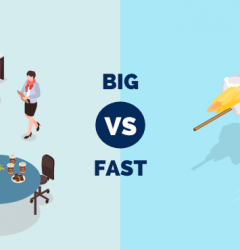
As we live in a world where everyone has their own pace, it is essential that we abide by the pace of the digital world, otherwise, we will become obsolete. The current evolution of apps is the “SuperApp.”
The idea behind is that they can do everything, contrary to regular apps, which are typically built to do one thing well. The creators of these apps hope you will spend more time with them now that they have powers that previously required you to launch dozens of other apps.
In recent months, Uber, Spotify, PayPal, Snap, and Jack Dorsey’s Block have all endorsed the idea of a “SuperApp.” In a recent interview, Elon Musk discussed the concept of a “SuperApp.”
According to Gartner, more than half of the global population will use multiple SuperApps on a daily basis by 2027. Workflow, collaboration, and messaging platforms will also be included in the concept.
What is a SuperApp?
They are all-in-one mobile app design solutions that assemble all the apps you need for your daily activities. Users can find all the needed information in one place. To accomplish different tasks, you do not have to download multiple programs. Social networking, shopping, and banking are all examples of SuperApps.
You discover a single ecosystem with transaction capacity and the last mile that arrives at your doorstep instead of multiple watery apps.
Also Read: What is Decision Automation and how can you drive it?
The Origin of SuperApps
The idea of a SuperApp isn’t new, but it’s become more popular recently. Chinese internet giant Tencent launched WeChat in 2011 as the archetypal SuperApp. In addition to ride-hailing, e-commerce, mobile payments, and even government services, it began as a mashup of a messaging app and a social medium. Currently, it is around 1.3 billion users, mostly in China.
It was never WeChat’s goal to become a SuperApp, and the word doesn’t exist in Chinese, says former WeChat global marketing and partnerships head Kevin Shimota. As WeChat added features, starting with payments, it became so dominant.

Shimota adds that WeChat launched a platform for “mini-apps” within WeChat itself, but no one knew if it would be successful at first.
In the rest of the world, WeChat occupies a similar niche to Apple’s App Store and Google’s Play Store. WeChat offers more than one million apps. According to Mr. Shimota, unlike western app stores, WeChat only makes them available when they are released. Instead of making them easily accessible.
In Asia, other apps have aspired to similar comprehensiveness-though none have succeeded quite as well-including Alipay in China, Gojek and Grab in Southeast Asia, and Line in Japan.
Also Read: Version Management Benefits: Leverage Quixy for Better Project Tracking
SuperApps: How they work
An ecosystem of external and internal partners builds and deploys modular micro-apps to the SuperApp to offer a range of discrete services to users. As a result of this provider ecosystem, it offers convenient access to a wider range of services.
Software engineering leaders can already build SuperApps with tools and platforms from several technology vendors.
The following are examples:
- Cloud platform vendors that provide platform as a service (PaaS).
- Development frameworks for web and mobile apps that enable the deployment of mini apps.
- Platforms for multi-experience development (MX).
- LCAPs (low-code application platforms).
- Providers of development services.
In SuperApp, users can select the micro app they want to use when needed. Authenticating users with simple methods, such as single sign-on (SSO), and tracking their preferences and app usage is key to data sharing.
Also Read: Project Management Hacks 101: Handbook for Assured Success
The Purpose of SuperApps
In the financial services industry, SuperApps combine services, features, and functions from multiple mobile apps into a single one.
SuperApps are also created by software engineering leaders to provide their employees with a more engaging experience. Through these, economies of scale can be achieved and the network effect of multiple mini-app teams can be leveraged. In addition, users can activate their toolboxes of mini-apps and services, which can improve the UX.
According to Statista, there are over four million apps available on the Google Play store and Apple App Store combined. This glut is frustrating for countries with limited smartphone memory and a saturated market. This imbalance can be corrected by a SuperApp. Through the use of this application, a mobile operating system can be enhanced by reducing the time required to complete specific tasks and, in turn, increasing productivity. In addition, it incorporates UX elements that make it easier for users to become accustomed to using mobile phones.
SuperApps: Beyond Daily Conveniences
SuperApps have the potential to revolutionize how we interact with various aspects of our lives, extending far beyond daily conveniences like shopping and messaging. Here’s a glimpse into how these powerful platforms might evolve:
- E-Government Integration: SuperApps could become gateways to e-government services, streamlining citizen engagement. Imagine scheduling appointments, paying taxes, or renewing licenses all within a familiar SuperApp environment.
- Healthcare Integrations: SuperApps could integrate with healthcare providers, allowing users to book appointments, access medical records, or even receive telehealth consultations – all conveniently within the app.
- Data-Driven Personalization: SuperApps, with their vast user data, could offer highly personalized experiences. Imagine customized recommendations for transportation, financial services, or even educational resources based on your preferences and usage patterns.
These are just a few examples, and the possibilities are vast. SuperApps have the potential to become central hubs for managing various aspects of our lives, fostering convenience, efficiency, and a more connected user experience.
The Potential Challenges of SuperApps
It may seem that the rise of SuperApps in the East is a relatively peripheral trend to the banking sector. However, the reality is that they have the potential to upend it. For bankers to be aware of developments, there are three reasons to do so-
- Customers can access basic banking, savings, and investment services through SuperApps such as WeChat and Alipay. Financial institutions may soon find themselves relegated to performing only regulated activities. SuperApps remain in control of the customer experience and relationship, similar to what happened in the insurance sector with platform plays and aggregators.
- Not only do SuperApps have unprecedented access to customer data, but they are also capable of utilizing it most effectively to improve the customer experience. Their data is being used to improve operational processes – such as using social media and transactional data to assess the risk of loan applicants and to better target financial products to customers, at the exact time that they need them. It is difficult for traditional banks to gain a clear picture of their customers due to their siloed complete and mainframe technology estates.
- The creation of the business ecosystem can be more challenging than the implementation of technology.
- The interaction style of different users with apps varies; therefore, getting the design of a SuperApp right for the audience, together with having consistency in the mini-apps published, may affect adoption and retention.
Supercharge Your Business with No-Code & Power of Super Apps
Want to take your business to the next level? Look no further than the intersection of super apps and no-code. Imagine a world where you can create a single, all-in-one platform that seamlessly integrates multiple functionalities, all without the need for complex coding.
No-code empowers you to become the architect of your own super app, combining features like e-commerce, communication, scheduling, and more. With drag-and-drop simplicity, you can design a personalized user experience that wows your customers and enhances their engagement.
Gone are the days of relying on multiple disjointed applications. With no-code, you can consolidate your business operations into a unified, powerful super app that boosts efficiency, streamlines workflows, and saves valuable time and resources.
Whether you’re a startup, small business, or enterprise, the potential of a no-code super app is boundless. Embrace the freedom to innovate, the agility to adapt, and the simplicity to create. Unlock the extraordinary with the perfect synergy of super apps and no-code, and propel your business to new heights of success.
Building Your SuperApp Dream with Quixy
The concept of a SuperApp might seem complex, but what if you could build core functionalities without extensive coding? This is where Quixy, a powerful aPaaS (Application Platform as a Service) solution, comes in.
Quixy empowers businesses to create custom applications with its user-friendly interface and low-code/no-code development tools. Here’s how Quixy can help you build your SuperApp vision:
- Rapid Development: Quixy’s drag-and-drop functionality and pre-built components accelerate the development process, allowing you to build core functionalities faster and more efficiently.
- Seamless Integration: Integrate existing services you want to offer within your SuperApp. Quixy’s integration capabilities allow you to connect with payment gateways, booking systems, or other relevant platforms.
- Modular Design: Build your SuperApp in phases, starting with core functionalities and gradually adding new features as needed. Quixy’s modular approach facilitates easy scaling and future updates.
- Customization: Quixy allows you to customize the user interface and functionalities of your SuperApp to match your brand and user experience goals.
- Security & Scalability: Quixy’s platform ensures the security of user data and can scale to accommodate a growing user base as your SuperApp gains traction.
By leveraging Quixy’s capabilities, businesses can explore the exciting world of SuperApps without the limitations of traditional development approaches.
Take the first step towards building your SuperApp. Explore Quixy today!
Conclusion
Among users, these are as popular as apps such as food delivery apps and e-commerce apps. Several companies are transforming their apps into SuperApps, while others are hoping to be associated with any popular such apps.
This will result in more people signing up for their applications. Furthermore, due to the high demand for SuperApps, they are likely to receive increased attention.
As a result, users will always download any app that meets their needs. However, in today’s world, it is also crucial that they consider how the app simplifies their lives.
Frequently Asked Questions(FAQs)
Q. What defines a super app?
A super app is an all-in-one platform offering multiple services like messaging, payments, shopping, and more within a single application. It is a one-stop solution, integrating various functionalities to fulfill diverse user needs, creating a seamless and convenient user experience.
Q. What are the key features of a super app?
Key attributes include a range of services accessible from one app, a user-friendly interface, cross-service integration, seamless transactions, and personalized experiences, all contributing to enhanced user convenience.
Q. How do super apps benefit users?
Super apps streamline daily activities by providing a single platform for various needs like messaging, shopping, payments, transportation, and more. This amalgamation saves time, simplifies tasks, and offers a unified and efficient user experience.
Q. Examples of popular super apps globally?
Globally recognized super apps like WeChat, Grab, and Gojek provide diverse services like messaging, payments, ride-hailing, food delivery, and more, demonstrating this concept’s extensive functionalities and widespread adoption. Also, with magical no-code super power platforms like Quixy, you can create custom apps however you want.
Q. What industries are impacted by the rise of super apps?
Super apps impact numerous sectors, including finance, transportation, food delivery, healthcare, and e-commerce. Their multifunctionality changes consumer behavior, reshaping how services are accessed, used, and experienced across various industries.
Subscribe
Login
Please login to comment
0 Comments
Oldest
















